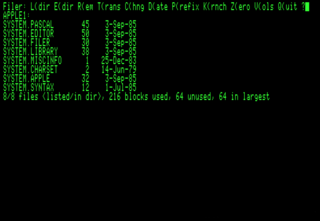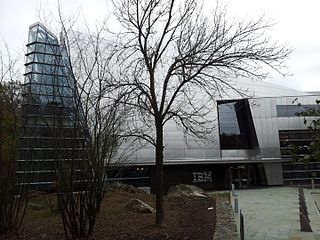History
In 1981, University of California, San Diego (UCSD) professor Kenneth Bowles was looking to do for the emergent Ada programming language what the UCSD Pascal and the UCSD p-System language translator and operating system had done for the Pascal programming language and world. [1] He thus founded a company called Telesoftware, which soon merged with another UCSD-offshoot company Renaissance Systems, founded by Craig Maudlin and Christopher Klein, to form TeleSoft. [2] The early merged company initially sold various Motorola 68000-based systems and software. [3]

The University of California, San Diego is a public research university located in the La Jolla neighborhood of San Diego, California, in the United States. Established in 1960 near the pre-existing Scripps Institution of Oceanography, UC San Diego is the seventh-oldest of the 10 University of California campuses and offers over 200 undergraduate and graduate degree programs, enrolling approximately 30,000 undergraduate and 8,500 graduate students. The university occupies 2,141 acres (866 ha) near the coast of the Pacific Ocean, with the main campus resting on approximately 1,152 acres (466 ha).
Kenneth L. "Ken" Bowles was an American computer scientist best known for his work in initiating and directing the UCSD Pascal project, when he was a professor of computer science at the University of California, San Diego (UCSD).

UCSD Pascal is a Pascal programming language system that runs on the UCSD p-System, a portable, highly machine-independent operating system. UCSD Pascal was first released in 1977. It was developed at the University of California, San Diego (UCSD).
TeleSoft got off to a fast start in the Ada compiler market, releasing its first product in May 1981, well before the new language standard became final. [4] TeleSoft had thus put out the first commercially available Ada compiler. [5] Bowles took an-earlier-than-usual status as an emeritus professor at UCSD in 1984 in order to focus his attentions on TeleSoft. [6] The company was able to obtain funding, including $2 million in venture capital funding in 1984. [2]
The first generation TeleSoft compiler was very slow, but compilation speeds improved considerably with the TeleGen2 product. [7] TeleSoft sold both native compilers and cross compilers for various embedded systems architectures. [8] The customer base for the compiler grew to include many large corporations, including IBM, Sun Microsystems, Intel, Cray Research, Motorola, and Unisys. [9]

International Business Machines Corporation (IBM) is an American multinational information technology company headquartered in Armonk, New York, with operations in over 170 countries. The company began in 1911, founded in Endicott, New York, as the Computing-Tabulating-Recording Company (CTR) and was renamed "International Business Machines" in 1924. IBM is incorporated in New York.

Sun Microsystems, Inc. was an American company that sold computers, computer components, software, and information technology services and created the Java programming language, the Solaris operating system, ZFS, the Network File System (NFS), and SPARC. Sun contributed significantly to the evolution of several key computing technologies, among them Unix, RISC processors, thin client computing, and virtualized computing. Sun was founded on February 24, 1982. At its height, the Sun headquarters were in Santa Clara, California, on the former west campus of the Agnews Developmental Center.

Intel Corporation is an American multinational corporation and technology company headquartered in Santa Clara, California, in the Silicon Valley. It is the world's second largest and second highest valued semiconductor chip manufacturer based on revenue after being overtaken by Samsung Electronics, and is the inventor of the x86 series of microprocessors, the processors found in most personal computers (PCs). Intel ranked No. 46 in the 2018 Fortune 500 list of the largest United States corporations by total revenue. Intel is incorporated in Delaware.
The Ada software environment was originally thought to be a promising market, with a number of small, new companies including TeleSoft seeking to gain a foothold in it. [10] But the Ada compiler business proved to be a difficult one to be in; many of the advantages of the language for general-purpose programming were not seen as such by the general software engineering community or by educators. [11] By the late 1980s, TeleSoft had suffered two rounds of layoffs. [12] Still privately held, in 1988 it reportedly had revenue of $18 million and some 235 employees. [9] [13]





